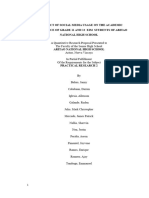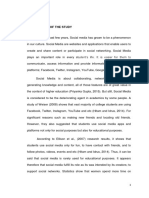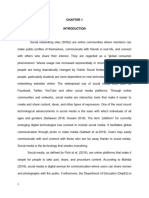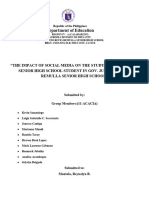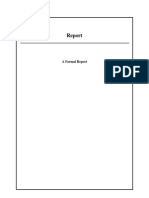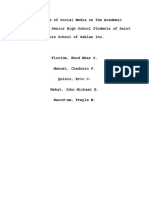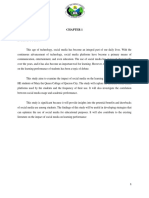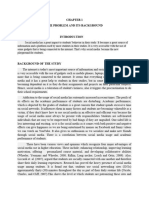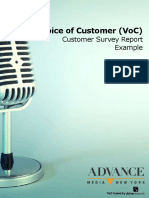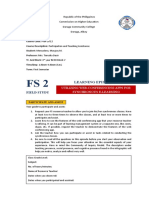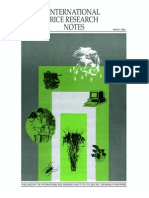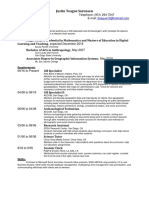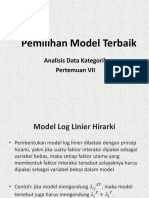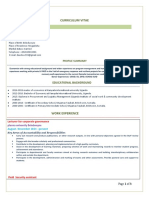0% found this document useful (0 votes)
33 views26 pagesResearch
The document explores the impact of social media on the academic performance, specifically the GPA, of senior high school students. It discusses both the positive aspects, such as collaboration and resource sharing, and the negative effects, including distractions and mental health issues. The study aims to understand this relationship and provide insights for educators, parents, and policymakers on managing social media use among students.
Uploaded by
sketchys777Copyright
© © All Rights Reserved
We take content rights seriously. If you suspect this is your content, claim it here.
Available Formats
Download as DOCX, PDF, TXT or read online on Scribd
0% found this document useful (0 votes)
33 views26 pagesResearch
The document explores the impact of social media on the academic performance, specifically the GPA, of senior high school students. It discusses both the positive aspects, such as collaboration and resource sharing, and the negative effects, including distractions and mental health issues. The study aims to understand this relationship and provide insights for educators, parents, and policymakers on managing social media use among students.
Uploaded by
sketchys777Copyright
© © All Rights Reserved
We take content rights seriously. If you suspect this is your content, claim it here.
Available Formats
Download as DOCX, PDF, TXT or read online on Scribd
/ 26





















